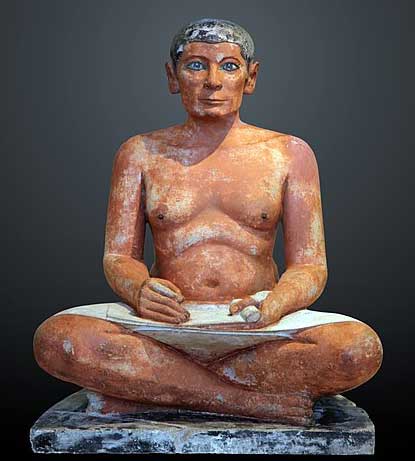The Dabous Giraffes are neolithic petroglyphs found near the Aïr Mountains in north Niger. They are believed to have been created 6000 - 8000 years ago when the region was less arid, and the Sahara was a vast savannah. They are the largest known animal petroglyphs ever found. 1/ 

The giraffe carvings were first recorded by French archaeologist Christian Dupuy in 1987, and documented by David Coulson in 1997 while on a photographic expedition to the site. The carvings are 6 metres in height and consists of two giraffes carved into the Dabous Rock. 2/ 

Dabous Rock is located on the slope of a small rocky outcropping of sandstone in the first foothills of the Air Mountains. One of the giraffes is male, while the other, smaller, is female. In the surrounding area 828 further images have been found engraved on the rocks. 3/ 

Of these 828 additional images, 704 are animals (cattle, giraffes, ostriches, antelopes, lions, rhinoceros, and camels), 61 are human, and 17 are inscriptions in Tifinâgh. 4/ 
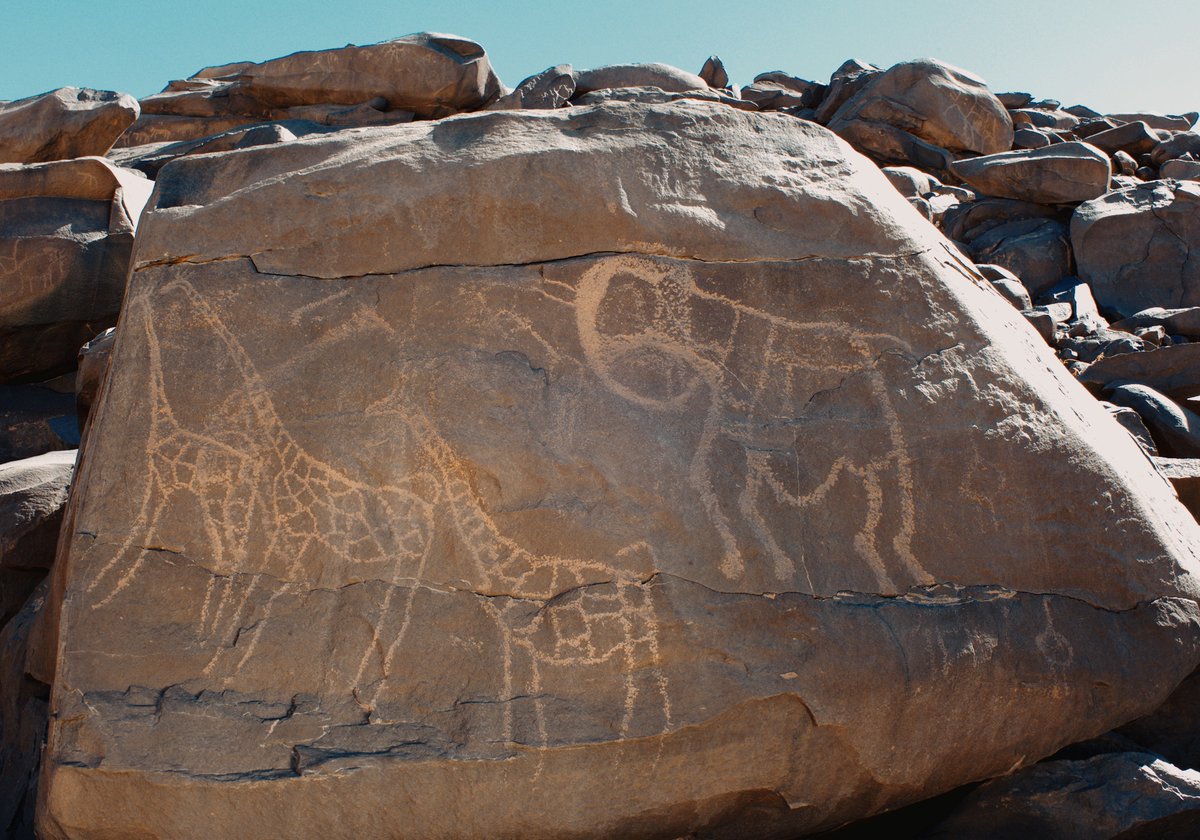
The area in north central Niger where the petroglyphs are found is in the absolute heart of the Sahara, and is known as the Tenere Desert. 'Tenere', literally translated as ‘where there is nothing’, is a barren desert landscape stretching for thousands of miles. 5/ 

For at least the last two millenia, the Tuareg have operated a trans-Saharan trade route across this area, connecting the great cities on the southern edge of the Sahara to the northern coast of Africa. But the giraffes were likely created by an earlier people, the Tenerians. 6/ 
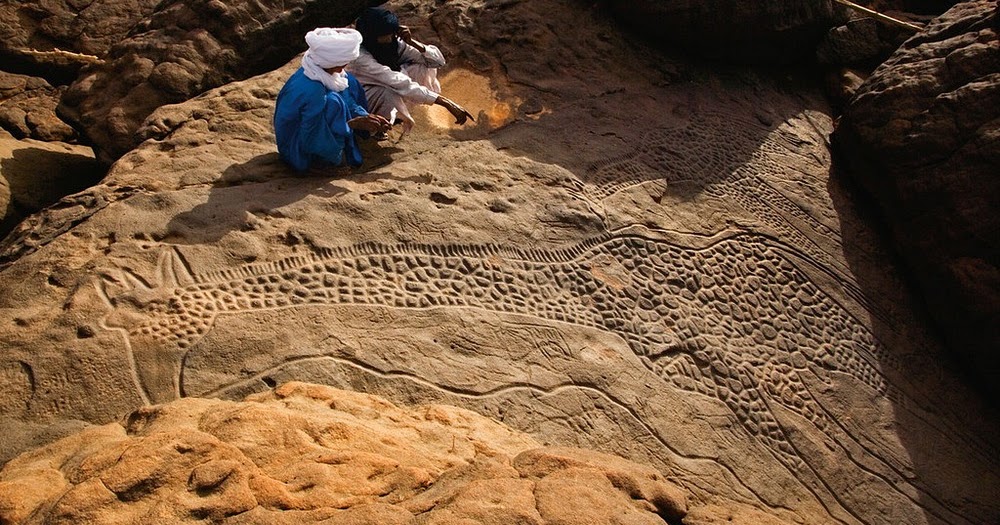
The Tenerians arrived in the area about 8000 years ago, during a period of relatively high rainfall. Bones and artefacts found in several Tenerian gravesites imply that they herded cattle and hunted fish and wildlife. 7/ 

How were the carvings created? The original artists must have used a flint-like material to carve the softer sandstone of Dabous. The sands surrounding the outcrop are covered with numerous chisels of petrified wood, perfect for wearing away grooves and smoothing the surface. 8/ 
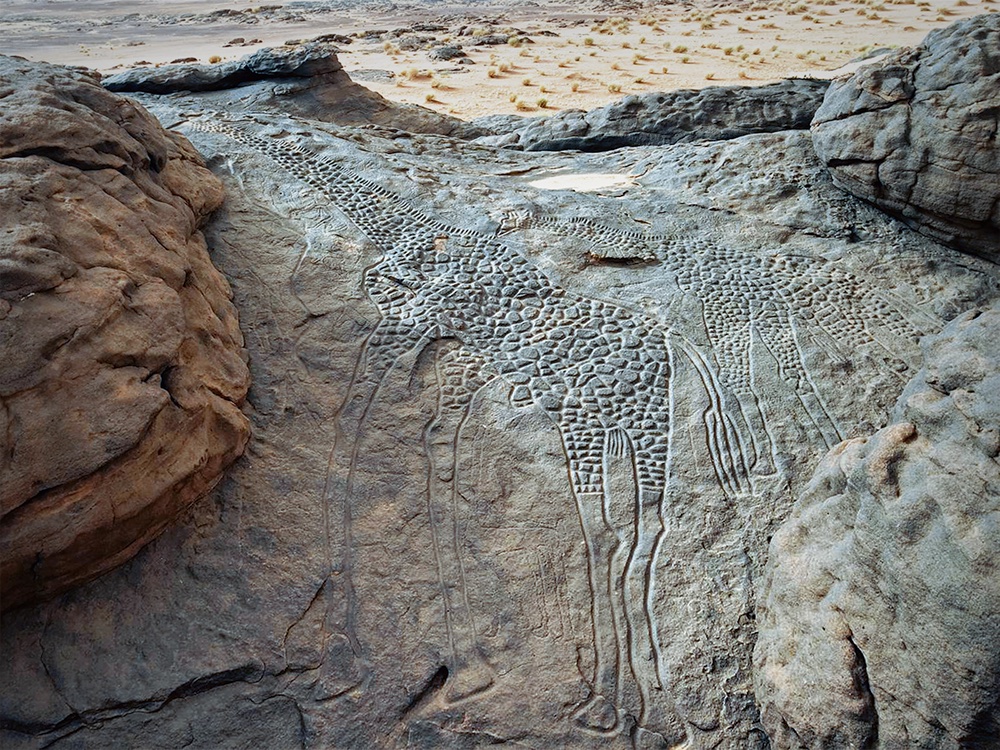
In 2000 the giraffe carvings of Niger in Africa were declared one of the the hundred most endangered sites by the World Monuments Watch. The giraffe carvings and other petroglyphs were in danger of being damaged by trampling, degraded by graffiti, and fragments being stolen. 9/ 

As a result, the Bradshaw Foundation, the global rock-art conservation group, initiated a project to make a silicon mould of the carvings, from which a no. of aluminium casts were produced. The first cast was given to the town of Agadez in Niger, near the archaeological site. 10/ 




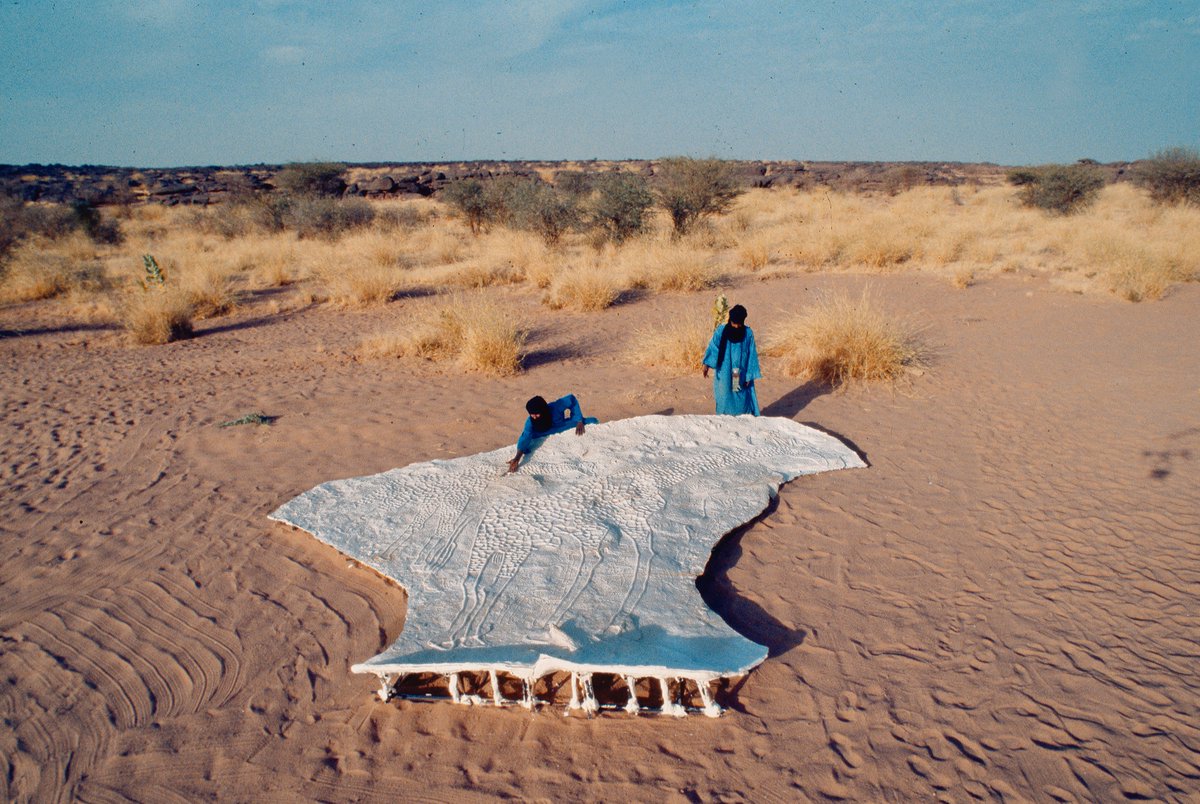


Each giraffe has an incised line emanating from its mouth or nose, meandering down to a small human figure. This meaning of this remains a mystery - it may indicate that giraffe were hunted or even domesticated, or it may reflect a religious, mythical or cultural association. 11/ 

Today, a small group of Tuareg live in the area, acting as permanent guides and custodians of the site. 12/ 



• • •
Missing some Tweet in this thread? You can try to
force a refresh








